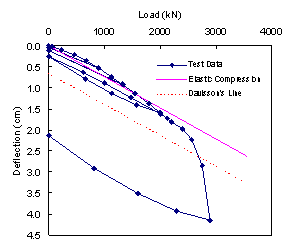EireChch
Geotechnical
- Jul 25, 2012
- 1,336
Can someone tell me a reason as to why we cant use preliminary test pile (so a pile that has been loaded to 2.5 times its working/allowable load, maybe to failure, maybe not) as a working pile that will support the structure.

